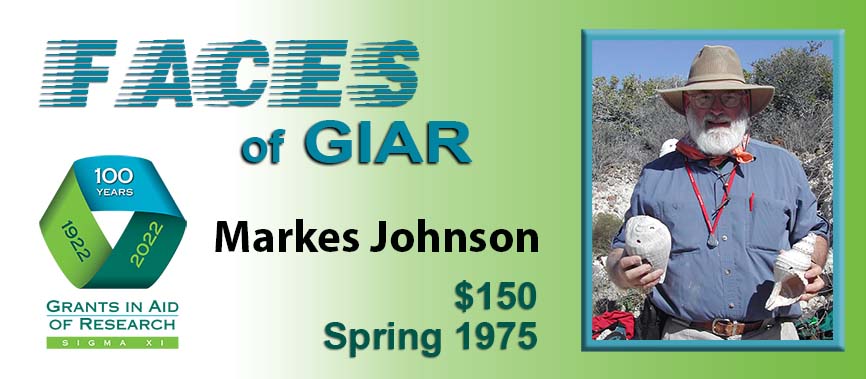February 05, 2022

Grant: $150 (Spring 1975)
Education level at time of the grant: PhD student
Project Description: My Grants in Aid of Research award helped fund a geology/paleontology project that looked at time-repetitive patterns of fossil associations in Lower Silurian strata exposed in the upper Midwest United States. I undertook the work as a candidate for a doctoral degree at the University of Chicago. The goal of the project was to detect signs of changing sea level over a few tens of millions of years. The expected outcome was to elicit a regional sea-level curve that could be tested against patterns in other regions such as New York State, parts of Canada, and the British Isles. Although a token amount of money, the funds went to pay mileage at 10 cents/mile for field travel in eastern Iowa and adjacent parts of Illinois and Wisconsin. The research was a significant contribution to the concept of global changes in sea level brought about by the advance and retreat of ancient glaciations centered elsewhere over the Silurian South Pole.
How did the grant process or the project itself influence you as a scientist/researcher? The results of my project led directly to one of the first publications in my scientific career. Almost directly on receiving the grant, I was elected to Associate Membership in the University of Chicago Sigma Xi chapter (and eventually to full membership, which I have maintained ever since). The experience gave me the confidence to seek other grants, for example, through the Fulbright Program and the National Science Foundation, which brought me overseas to test my ideas in Scandinavia and China during my ensuing career as a college professor. Fieldwork later expanded to include similar work on much younger limestone strata around Mexico’s Gulf of California, also affected by changing sea level.
Where are you now? I am the Charles L. MacMillan Professor of Natural Science, Emeritus, at Williams College in Williamstown, Massachusetts, where I taught in the Geosciences Department over a 35-year career. Although my grant-writing days are over, I continue with field studies and remain active as the author of science books accessible to the general public.
Students may apply for Sigma Xi research grants by March 15 and October 1 annually at www.sigmaxi.org/giar.